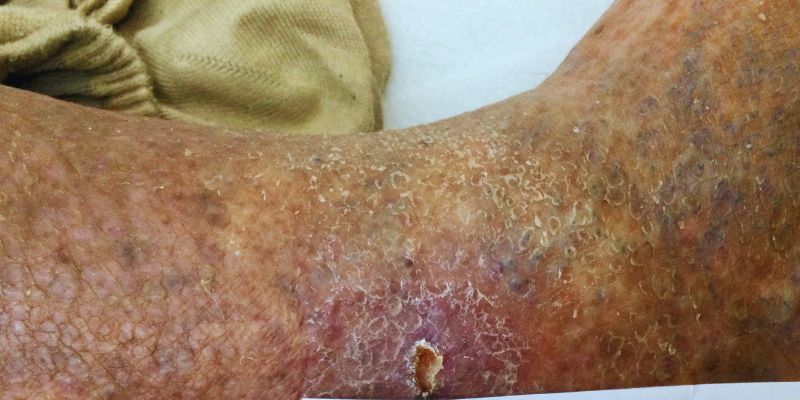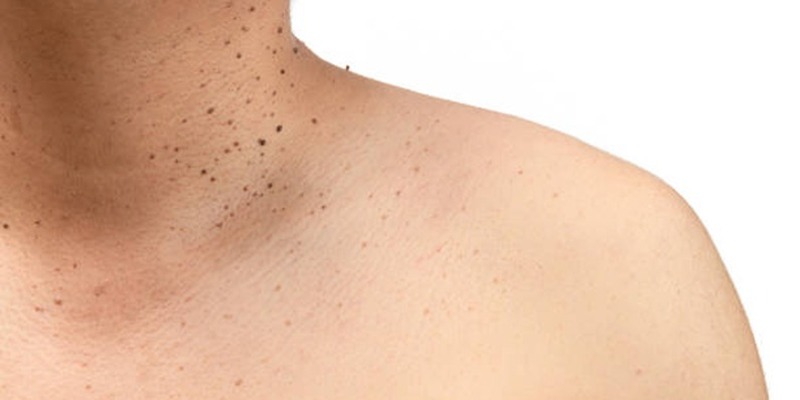A Comprehensive Guide to the Causes of Leg Ulcers: Understanding the Roots
Advertisement
Open sores called leg ulcers heal over more time. Often, they result from inadequate blood flow. Leg ulcers afflict many people, particularly those with underlying medical problems. These wounds could cause major infections and be quite uncomfortable. Knowing their causes will help to avoid difficulties.
Common causes of leg ulcers are diabetes, poor circulation, and continuous pressure on the skin. Venous and arterial disorders are the leading causes. Other things, such as infections or accidents, can also cause ulcers. Untreated leg ulcers can seriously compromise health. One must see a doctor. This article looks at the main causes and developmental patterns of leg ulcers.

Venous Insufficiency: A Major Cause of Leg Ulcers:
Leg ulcers most often arise from venous insufficiency, which results from the legs' veins being unable to send blood back to the heart. This disorder causes higher vein pressure, which weakens the skin over time. The legs' blood pooling produces skin discoloration and puffiness. The skin grows fragile and easily breakable. Usually, venous leg ulcers show up at the ankles. They may leak liquids and be uncomfortable.
Venous ulcers are more likely under several conditions. These cover aging, extended standing, and obesity. Venous insufficiency is also more likely in those with varicose veins. Control of venous problems can help to avoid leg ulcers. Good wound care and compression treatment help in healing. Doctors could also advise lifestyle adjustments, such as frequent exercise and leg elevation, which aid in improving blood flow. Early medical advice seeking helps to avoid major issues.
Arterial Disease and Leg Ulcers:
Arterial ulcers arise from inadequate leg blood flow. They grow when arteries cannot provide the tissues with sufficient oxygen. Ulcers so develop, and cell death results. Arterial disease can be caused generally by diabetes, smoking, and high cholesterol. One main component is atherosclerosis, where plaque builds and narrows arteries. Those with excessive blood pressure or heart disease also run in danger.
Usually, they first show on the toes or feet and arterial leg ulcers. They hurt particularly at night or when the legs are raised. The ulcer's surrounding skin is chilly, dry, and thin. Arterial ulcers, unlike venous ulcers, do not leak fluid. Improvement of blood circulation is part of treatment. Doctors could provide prescriptions for medicines or advise surgery. Control of risk factors, including smoking and high blood pressure, is vital. Moreover, a good diet and consistent exercise are helpful.
Diabetes and Leg Ulcers:
The main cause of leg ulcers is diabetes. Elevated blood sugar levels compromise nerves and blood vessels, influencing circulation and slowing down wound healing. Many times, neuropathy causes diabetic leg ulcers. Neuropathy makes it difficult to detect injuries and lessens sensation in the legs. Little cuts might become ulcers using infection. Moreover, it impedes healing and aggravates the problem of poor circulation.
People with diabetes should inspect their feet daily. Proper shoes help to avoid pressure sores. Maintaining blood sugar levels under control is crucial. Treatment calls for blood sugar control, medications for infections, and wound care. Sometimes, severe ulcers need surgery. Early discovery helps to avoid major problems like amputation. One should routinely see a doctor.
Pressure Ulcers: A Result of Prolonged Pressure
Pressure ulcers—also known as bedsores—develop from ongoing skin pressure. They are typical of those who have limited mobility or are bedridden. Pressure limits blood flow, damaging tissues and causing ulcers. Usually found on bony sites like the heels or ankles, these ulcers show. First, the skin could get red before opening. Untreated, the wound can develop and lead to infections.
Among the risk factors include old age, immobility, and inadequate diet. Higher risk include individuals in wheelchairs or those recovering from surgery and using certain mattresses and regular shifting help to avoid pressure ulcers. Treatment consists of lowering the pressure on the afflicted area. A high-protein diet and appropriate wound care help accelerate healing. To increase mobility, doctors may also advise physical therapy.

Infections and Skin Conditions Leading to Leg Ulcers:
Leg ulcers can also result from chronic diseases and skin infections. Bacterial infections compromise the skin and increase the likelihood. Cellulitis, a common skin disease, can cause open sores without treatment. Other skin disorders, like psoriasis or eczema, could aggravate leg ulcers. These disorders aggravate dryness and inflammation, raising the chance of wounds. Scratching or injuring the afflicted area could aggravate the situation.
Fungal infections can cause ulcers in those with weak immune systems. Maintaining clean and moist skin will help avoid these problems. Treatment hinges on the cause. Bacterial illnesses could require antibiotics. Anti-inflammatory lotions and moisteners can aid with skin disorders. Appropriate healing depends on seeking early medical treatment.
Trauma and Injury-Induced Leg Ulcers
Leg ulcers can form following an injury, particularly in those with weak circulation. Little wounds or scrapes that do not heal correctly can result in ulcers. Leg ulcers can also result from surgery, burns, or accident injuries. If the skin is not healing properly, an open wound could develop. Those with vascular disorders like diabetes run more danger.
The prevention of infections depends on appropriate wound treatment. Cleaning wounds and applying antimicrobial ointments can help. If a wound does not heal, medical advice may be required. Another key is avoiding injury. Proper shoes and protective gear can help lower the danger. Those with circulation issues should be especially careful to prevent cuts and bruising.
Autoimmune Diseases and Leg Ulcers
Leg ulcers can result from some autoimmune disorders. Diseases include lupus and rheumatoid arthritis, which compromise blood vessels and skin integrity and cause ulcers and inflammation. Ulcers can also arise from vasculitis, the disorder in which blood vessels become inflamed. Open sores result from decreased blood supply to the skin.
Treatment mostly addresses the underlying disease. Doctors could write prescriptions for medicines to lower inflammation. Moreover, good wound treatment is crucial for preventing infections. Individuals suffering from autoimmune illnesses should check their skin for changes. Early therapy can stop really bad ulcers. One can aid by keeping a good lifestyle and consulting medical guidance.
Conclusion:
Different medical disorders might lead to leg ulcers. Among common reasons are poor circulation, diabetes, and extended hypertension. Ulcers also come from infections, trauma, and autoimmune illnesses. Early identification and appropriate treatment are essential. Control of risk factors will help to avoid ulcers. Those with diabetes or vascular problems should take great care of their legs. The key to prevention is good circulation, healthy skin, and appropriate wound care. Early medical attention reduces complications. Protecting leg health can help one be better.
On this page
Venous Insufficiency: A Major Cause of Leg Ulcers: Arterial Disease and Leg Ulcers: Diabetes and Leg Ulcers: Pressure Ulcers: A Result of Prolonged Pressure Infections and Skin Conditions Leading to Leg Ulcers: Trauma and Injury-Induced Leg Ulcers Autoimmune Diseases and Leg Ulcers Conclusion:Advertisement












